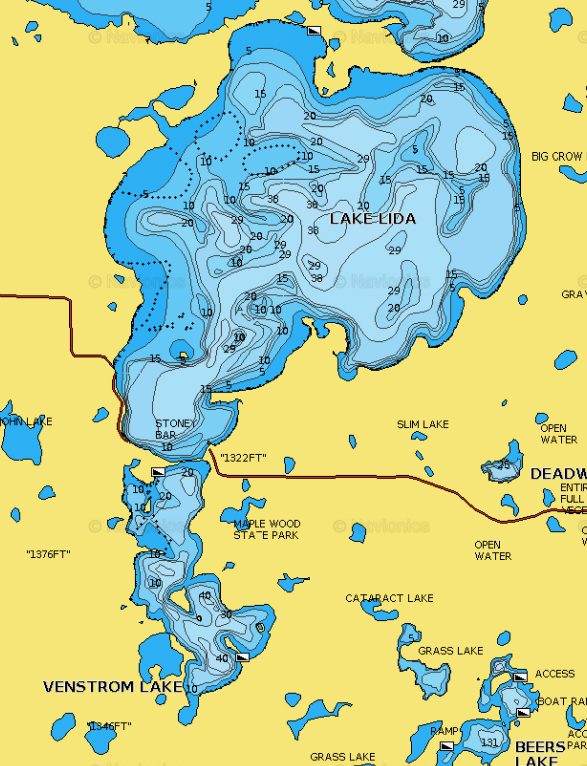
These highly productive and moderately fertile fisheries are located in northwestern Otter Tail County a short cast from the fishing-friendly city of Pelican Rapids. North Lida is widely considered one of the best all-around fishing lakes in Otter Tail County—which is high praise considering the number and quality of lakes within the county. South Lida, though considerably smaller, is no slouch, either.
Anglers can choose from a variety of fish species on both lakes, which are connected to each other via a navigable canal.
Fishery biologists with the state Department of Natural Resources consider walleyes, northern pike, smallmouth bass, black crappie, and bluegills to be North Lida’s dominant species, though you’ll also find other species such as largemouth bass, pumpkinseed sunfish, yellow perch, and tullibees, to name a few. South Lida is very similar, though largemouth bass replaces smallies as the dominant bass species.
Recent DNR lake surveys reveal that all the dominant species are abundant and offer good size distributions. For example, walleyes taken in DNR sampling on North Lida ranged in length from 7.4 to 25.2 inches, with an average length and weight of 14.3 inches and 1.0 pound. South Lida’s eyes averaged 17.5 inches and 2.1 pounds.
Age and catch data indicate that the 2011 and 2012 walleye year classes in both lakes are very strong and should provide consistently good walleye fishing for several years. Walleyes reach 13 to 14 inches at just four years of age, so later year classes quickly add catchable fish to the mix.
Northern pike abundance in North Lida has remained at a moderate density and natural reproduction has continued to be consistently good. Pike sampled ranged in length from 11.4 to 31.6 inches with an average length and weight of 20.5 inches and 1.8 pounds. Pike attain an average length of 21.5 inches at four years of age. South Lida’s pike numbers are on the upswing. Pike average 22.2 inches and 2.5 pounds and reach 24 inches by age four.
As for North Lida’s smallmouth population, smallies ranged in length from 5.7 to 17.6 inches with an average length and weight of 12.1 inches and 1.1 pounds. Age and length data indicate that reproduction is consistently good, and smallmouths attain an average length of 12.7 inches at four years of age.
On the panfish front, North Lida’s black crappies ranged from 8.8 to 13.3 inches with an average length of 11.2 inches, and a whopping 44 percent of the crappies were 11 inches or longer. South Lida also offers a solid crappie fishery, with an average size of 10.1 inches, and 30 percent of the population 11 inches or longer.
Bluegills are also abundant, though not quite as beefy. Just 26 percent of the North Lida bluegills sampled were 7.0 inches or greater in length. On South Lida, the percentage drops to 12 percent.
Fishing Tactics
Northland Fishing Tackle’s Cody Roswick, a veteran guide who has fished the Lida system since childhood, is a huge fan of the two lakes.
“Collectively, North and South Lida are one of the better destinations in the area for multispecies fishing,” says Roswick, proprietor of Fin Hunter’s Guide Service. “The fishing is pretty darn good for everything—including bass, panfish, walleyes, pike, and even some tullibees.”
Following are a few of Roswick’s favorite seasonal spots and presentations.
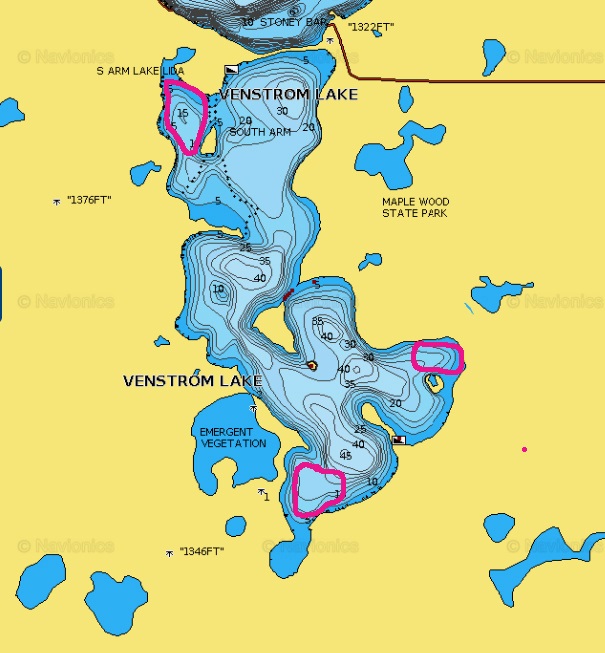
1. Roswick considers South Lida a panfish factory. In spring, he focuses on rocky midlake weedbeds and shallow bays with emergent vegetation, casting a Northland Fishing Tackle Gypsi Jig® tipped with a small artificial softbait like a 1-inch Impulse® Mini Smelt. “Suspend the jig below a small Lite-Bite Slip Bobber or casting bubble,” he notes.
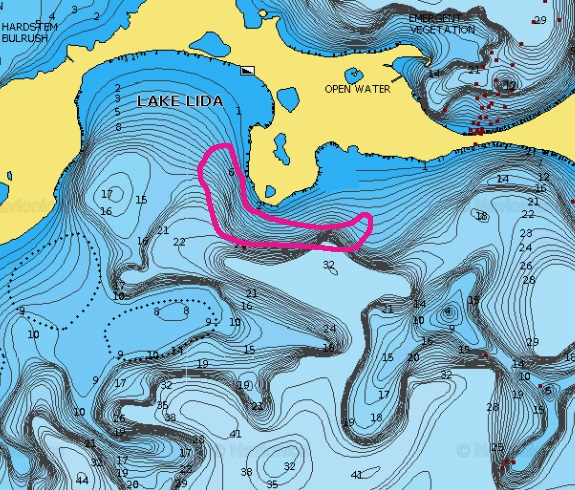
2. For early open water walleyes, Roswick directs anglers to the north end of North Lida. “The Clay Banks area is the spot to be for spring walleyes,” he says. “It’s a community hole, but the fishing is excellent.”
Roswick targets 15- to 20-foot depths along with a prominent underwater point. “It’s hard to beat a spottail shiner minnow on a ¼-ounce RZ Jig here and anywhere else in western Minnesota this time of year,” he says. “Drift with the wind, vertical jig, and slowly backtroll fish-holding areas.
3. In the summertime, Roswick’s walleye quest moves to North Lida’s mid-lake structure, where he trolls a variety of Northland spinner rigs, including the new Butterfly Rig, tipped with a half-crawler or a leech, behind a 1½-ounce Rock-Runner® Bottom Bouncer.
“You’ll also find a variety of gamefish along weed edges in the summer,” he adds. “Casting Northland spoons and spinnerbaits is a great way to connect with pike along with the weeds and around shallow, rocky reefs.” For smallies, he zeroes in on rock-weed transitions.
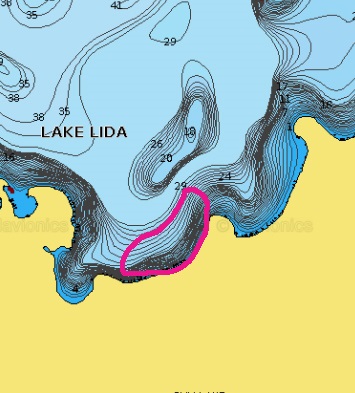
4. Fall sees Roswick fishing walleyes on the deeper mid-lake structure and the deep edges of the Clay Banks. “A Roach Rig and medium-sized sucker minnow or chub is dynamite now, but don’t overlook spinner rigs, either,” he says. “Steep breaks like the one east of the island north of Stoney Bar are also fall fish magnets.”
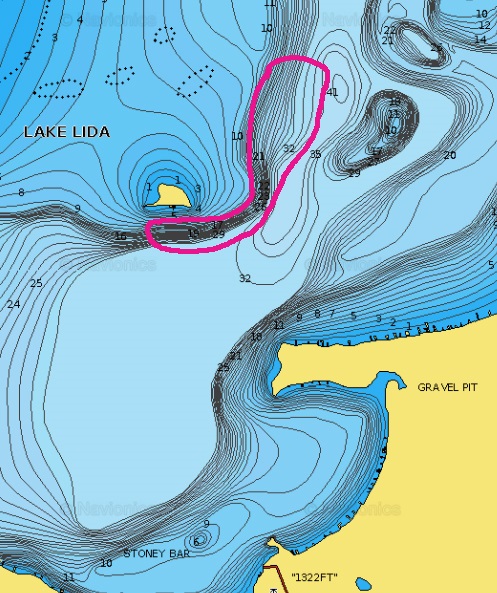
5. When winter ushers in the hard water fishing season, Roswick chases walleyes and crappies on deeper basins of North and South Lida, including the basin off the Clay Banks area. “You can get into big crappies and walleyes with vertical jigging spoons like the Northland Fishing Tackle Buck-Shot® Rattle Spoon, tipped with a minnow head,” he says.
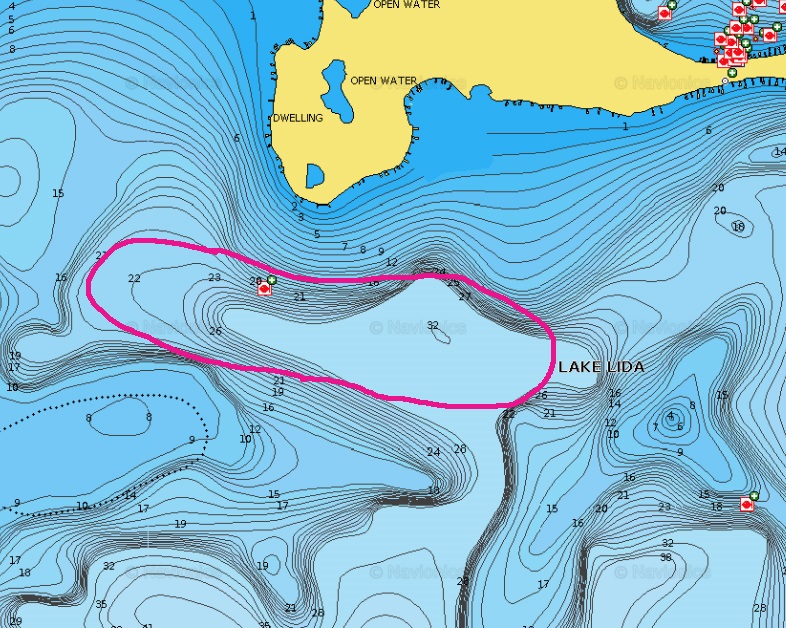
Vital Stats
North Lida Lake
Surface Area: 5,513.6 acres
Maximum Depth: 58 feet
Average Water Clarity 9.2 feet
Shoreline: 19.13 miles
South Lida Lake
Surface Area: 775.37 acres
Maximum Depth: 48 feet
Average Water Clarity: 5.6 feet
Shoreline: 10 miles
Fish Species Present: black bullhead, black crappie, bluegill, brown bullhead, green sunfish, hybrid sunfish, largemouth bass, northern pike, pumpkinseed, rock bass, smallmouth bass, tullibee (cisco), walleye, yellow bullhead, yellow perch, bigmouth buffalo, bowfin (dogfish), common carp, freshwater drum, white sucker, banded killifish, black nose shiner, common shiner, golden shiner, spottail shiner.

